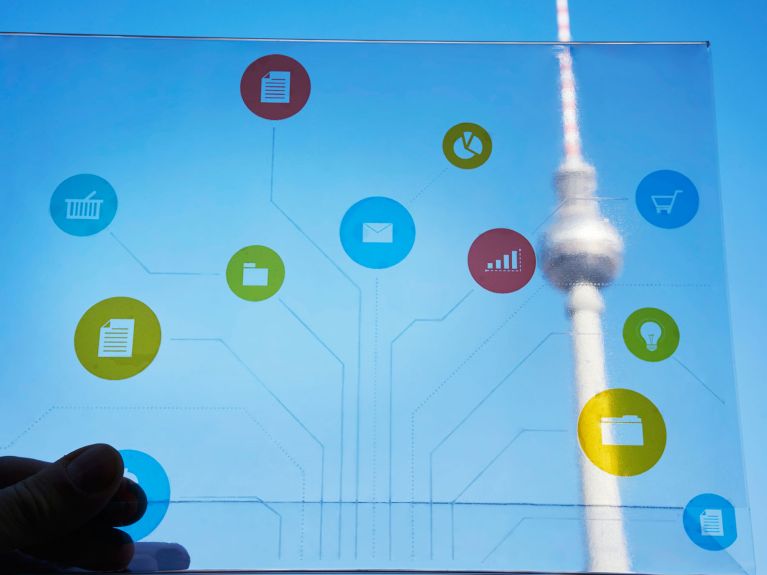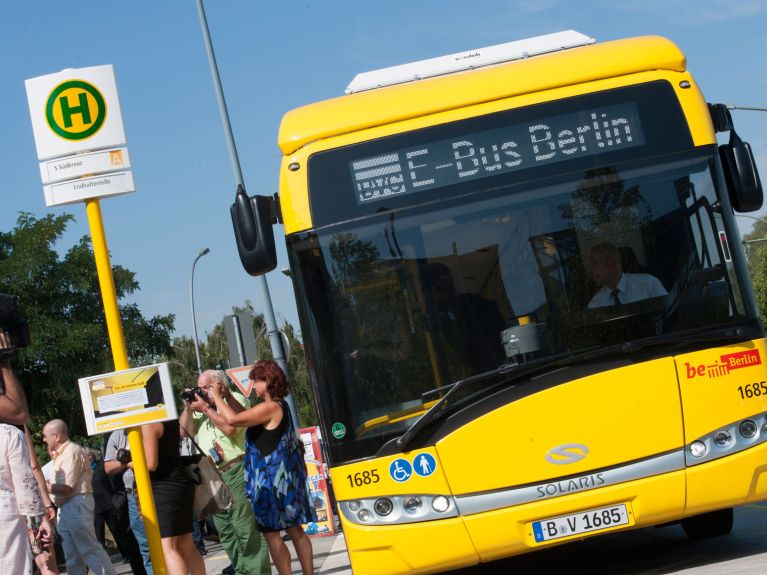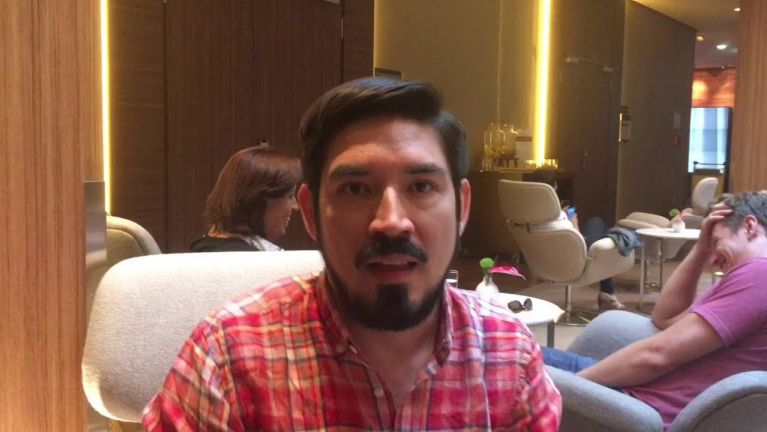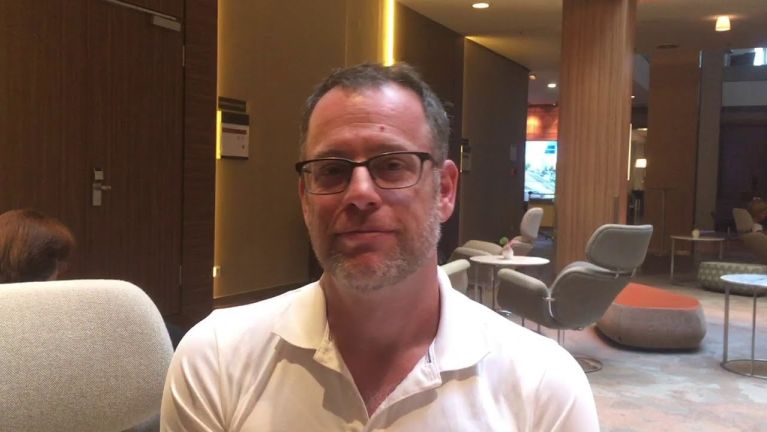Urbanism: insights into tomorrow’s cities
How “clever” do cities need to be to meet the challenges of the future? International visitors familiarise themselves with German smart city projects.

“Quick, quick, come over here please. You don’t yet get to see this very often!” On a hot summer day, a group of international visitors has gathered at Südkreuz LRT station in Berlin to find out how Germany intends to make its cities smarter. Smarter, as systems engineer Mauricio Rojas at the firm inno2grid has just explained, would mean, for example, switching urban transport to e-mobility. A few metres away a yellow e-bus operated by the Berlin transport authorities just happens to be pulling up. By 2025 there should be 200 e-busses like this on Berlin’s roads. “At the moment, however, there are only five in service.” A special feature is that the vehicle charges without any cables, by means of a charging plate beneath the asphalt. “Like with an electric toothbrush,” Rojas explains.

EUREF: Field of experimentation for smart city concepts
“The smart city”, it quickly becomes clear to the urban planners, scientists, and journalists who have been invited to spend a week in Berlin on the Visitors Programme of the Federal Republic of Germany, is still a field of experimentation even for international pioneers such as Germany. As such, immediately after visiting Südkreuz station they make their way to the European Energy Forum (EUREF) Campus.
The 5.5-hectare site is one of Germany’s most important reference projects when it comes to shaping tomorrow’s cities using technological innovations – an impressive laboratory for smart city visions. Here, around 100 companies and institutions with a total of 2,000 staff members are developing, among other things, solutions for sustainable energy supplies, autonomous mobility, and digital networking.
Autonomous driving: The change is getting going
There is also another bus to admire, this time considerably smaller than the vehicle at Südkreuz station but crammed with cutting-edge technology: The shuttle, which goes by the name of EasyMile, finds its way on its own. Unfortunately, the guests cannot get on board at present, Maximilian Power says regretfully. He is supervising the project for the Innovation Centre for Mobility and Societal Change (InnoZ). The technology is very sensitive – a few settings need to be adjusted, he adds. On the other hand, they were able to watch the vehicle completing a couple of test drives. “It doesn’t go fast,” Power admits. “Its speed is between 10 and 20 kilometres an hour, but then again, on average rush hour traffic in Berlin doesn’t move any faster anyway.”
I’m fascinated by the willingness to change in Germany.
Rethinking, productively tackling new challenges by means of new technologies, this is also the idea behind an app called Modalyzer, which the Innovation Centre has developed to make traffic flows more visible, for example those of cyclists, whose motion data were previously not available. Mario Silva, an urban planner and researcher into new infrastructure solutions for the Guadalajara region in Mexico, is immediately excited. “That is precisely what we are also aiming to do.”
Dieses YouTube-Video kann in einem neuen Tab abgespielt werden
YouTube öffnenThird party content
We use YouTube to embed content that may collect data about your activity. Please review the details and accept the service to see this content.
Open consent formThe tour of the Campus passes charging stations for electric cars, through a showroom where the concept behind the smart grid, i.e. the smart networking of energy sources, is explained, and through a high-efficiency, cutting-edge gas power station. What is interesting is that it is not necessarily the innovative strength of the technology that excites the large number of visitors. “From a technological point of view I don’t actually see a lot that’s new in Germany, said Andrew Yan, Professor of Urban Studies at Simon Fraser University in Vancouver, Canada. “But what I really do find fascinating is the willingness to change.”
A small wind turbine with great symbolic power
The social aspect of innovations also features on the Campus. Uriel Babczyk, an urban planner from Tel Aviv, was curious to know what the output is of the small wind turbine next to the charging station for electric cars. He was surprised by the engineer Mauricio Rojas’ answer: “Probably just about enough to heat a cup of tea.” The wind turbines’ output is irrelevant, Rojas explains. “It’s about inspiring visitors with our ideas. And wind turbines are brilliantly suited to that.”
Dieses YouTube-Video kann in einem neuen Tab abgespielt werden
YouTube öffnenThird party content
We use YouTube to embed content that may collect data about your activity. Please review the details and accept the service to see this content.
Open consent formData flows and privacy
The fact that there is more than energy management and electromobility to the smart city concept is illustrated by the IT firm Cisco in an impressive presentation of the opportunities inherent in networking data flows: “Waste, water, electricity, light, transport, criminality – at the moment all these areas of urban infrastructure are organised in silos. We can bring them together,” explains Marwin Kunz, programme manager at the Cisco Innovation Centre on the EUREF Campus.
The guests are impressed, albeit sceptical with regard to privacy. Here too, though, it turns out that technology is not the biggest challenge: Flavia Marzano, an urban planner from Rome, puts it in a nutshell: “Dismantling silos is all well and good, but what is more important for me is how to get my colleagues behind the idea.”


